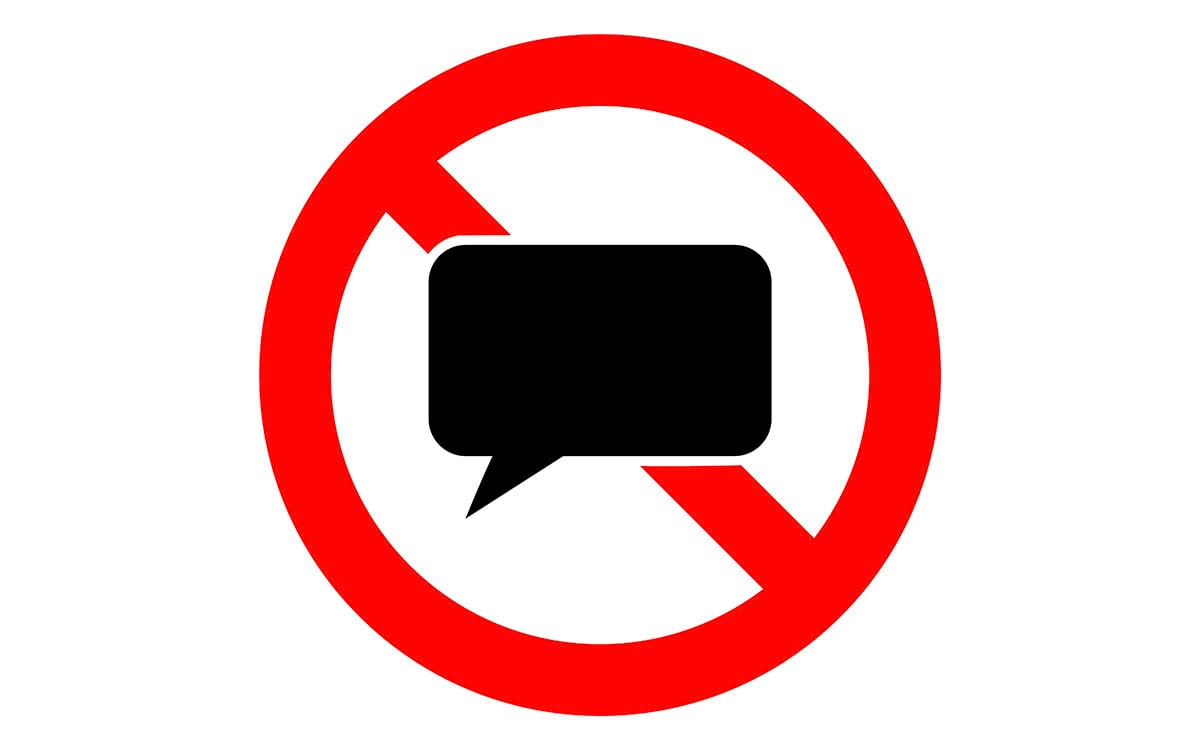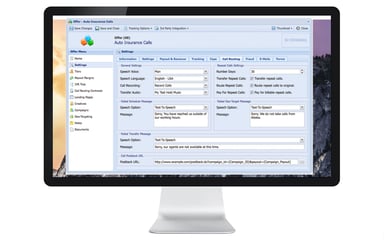SMS Marketing Regulations and TCPA Text Message Rules
SMS (and MMS) marketing has become a preferred channel for B2C companies seeking direct communication with consumers. However, like every form of communication, it's not devoid of regulations. Knowing these text marketing regulations will help you stay compliant.
The following rules and regulations apply to companies sending SMS or MMS messages in the United States. Other countries have their own regulations regarding SMS marketing and opt-outs. For example, Canada's Anti-Spam Legislation (CASL) has specific requirements for obtaining consent and including opt-out mechanisms in messages.
- TCPA and FCC Regulations
- SMS Opt-In and SMS Opt-Out
- Penalties for Non-Compliance
- A2P 10DLC
- Prohibited Messages
- Additional Resources

Text Message Compliance, TCPA and FCC Regulations, and Consent
Adhering to the Telephone Consumer Protection Act (TCPA) is crucial for SMS and MMS marketing in the U.S. The TCPA, enforced by the Federal Communications Commission (FCC), mandates various restrictions and guidelines to protect consumers from unsolicited telemarketing efforts. TCPA SMS compliance laws protect consumers from fraudulent and predatory businesses, but they also protect
Consent and Unsolicited Text Message Laws
At the heart of the TCPA lies the principle of "express written consent." Before sending any promotional or marketing text messages, businesses must have written consent from consumers. Marketers must explicitly obtain consent; the assumption of consent is not enough.
A simple purchase from a consumer doesn't grant the business permission to send marketing messages.
Note: In December 2023, the FCC adopted a rule requiring consumers to provide one-to-one consent, separate opt-ins for each individual business listed on lead forms. However, the rule was vacated in January 2024 by the U.S. Court of Appeals for the 11th Circuit. As of 2025, broad consent mechanisms remain permitted, though best practice is to disclose each business explicitly when using lead forms.
SMS Opt-In and SMS Opt-Out
The Importance of Opt-Ins in SMS Marketing
At the heart of ethical and compliant SMS marketing lies the principle of opt-in. Opting in means that a consumer has given explicit permission (consent) to a business to send them text messages.
Why Opt-In Matters
The opt-in process is not just a best practice; it's a legal requirement. By obtaining clear consent, businesses protect themselves legally and show respect for their consumer preferences.
How to Secure Opt-Ins
The most common opt-in methods are web forms, checkout pages, or opt-in text prompts. It's critical to clearly explain what the consumer is subscribing to, especially if marketing or promotional messages will be sent.
Double opt-in is the safest method to obtain clear consent. After the initial opt-in, the consumer receives a message asking them to confirm their subscription. It's an added layer ensuring the consumer genuinely wants to receive texts.
How to Build a TCPA-Compliant Lead Gen Form
The Importance of Opt-Out
SMS unsubscribe laws and opt-out language ensure that businesses respect the preferences and rights of consumers.
Ignoring opt-out regulations can lead to serious consequences.
To comply with opt-out regulations:
Provide a clear and easy opt-out process. Every promotional or marketing SMS message must contain clear instructions on opt-out. This ensures that the consumer can easily choose to stop receiving messages.
Use commonly understood opt-out language. Commonly accepted phrases for opting out include "STOP," "UNSUBSCRIBE," or "END." Once a user sends one of these commands to the sender, the business must stop sending promotional messages to that number.
Comply immediately with user requests. Once a user opts out, the business must immediately stop sending promotional texts. You can send a final confirmation message confirming they won't receive any further messages.
The law requires you to maintain an opt-out list, often called a "Do Not Text" list. When users opt out of text messages, add their number to this list to prevent future texts.
FCC Text Message Regulations
In addition to the TCPA, the FCC provides guidance on consent compliance and prohibited content. This includes restrictions on:
-
Fraudulent or deceptive message content
-
Promotions of prohibited products or services, such as unregulated financial services or federally illegal substances
Carriers may also apply stricter content filtering and block messages that violate their acceptable use policies, even if not explicitly illegal.

Penalties for Non-Compliance
Failing to respect opt-out requests or not including clear opt-out instructions can result in hefty fines under the TCPA. They can also damage the reputation of your business.
Legal Consequences
- Under the TCPA, statutory damages range from $500 to $1,500 per message depending on whether the violation is deemed willful.
- Businesses may face class-action lawsuits, which can result in large settlements or judgments.
- Some violations may lead to regulatory enforcement, including potential injunctions or license revocation in regulated industries.
Business Consequences
- Reduced deliverability and high opt-out rates
- Carrier filtering or number suspension
- Media backlash and brand damage
- Resource diversion to legal defense or compliance fixes
Navigating Carrier Restrictions
Beyond legal regulations, carriers impose technical standards and filters that affect message delivery. Failure to comply can result in blocked or throttled messages.
A2P 10DLC: What it is and Why it's Crucial for Your Business
The sales world is always evolving, with new protocols and systems designed to enhance communication, reduce spam, and improve deliverability. One such evolution is the introduction of A2P 10DLC in the U.S.
Fortunately, A2P 10DLC isn't just good for consumer privacy; it's also good for businesses.
A2P 10DLC
A2P stands for "Application-to-Person" - messages sent to a prospect's phone from a software application. This is the most common method businesses use to send messages like alerts, notifications, and promotional content.
10DLC stands for "10-digit long code" - a standard phone number format but used specifically for business messaging.
A2P 10DLC enables businesses to send application-driven, high-volume SMS and MMS messages using a 10-digit phone number.
Why A2P 10DLC was Introduced
A shortcode is a special telephone number designed for high-throughput, two-way messaging. They are shorter (usually five to six digits) than their A2P 10DLC counterparts.
Carriers introduced A2P 10DLC to merge the efficiency of shortcodes with the familiarity of regular numbers. A2P 10DLC reduces spam and increases message delivery by vetting the message source. They are also a more affordable solution for businesses relative to expensive shortcodes.
How A2P 10DLC Helps Businesses
10DLC numbers can handle more messages than regular long codes, making them ideal for businesses with a large text volume.
Since 10DLCs look like regular phone numbers, they offer a local and personal touch. This can lead to a higher engagement rate as customers often feel more comfortable engaging with a local number.
Businesses can choose a specific 10DLC number that aligns with their brand, enhancing brand recognition and trust.
With stricter regulations for business messaging, using an approved system like A2P 10DLC ensures compliance, reducing the risk of penalties.
A2P 10DLC Registration
The registration process for A2P 10DLC differs between carriers, but a general overview of the process is as follows:
- Business Verification: Before using A2P 10DLC, businesses must establish their identity. This usually involves providing details about the company, such as its legal name, industry type, website, and other relevant information.
- Campaign Registration: After brand verification, you must register your messaging campaign. This involves describing the nature of the messages you'll send (e.g., alerts, promotions, notifications), expected volume, and verifying opt-in compliance.
- Choose and Register a 10DLC Number: After verifying the brand and campaign, select and register a 10-DLC number for messaging. Some businesses choose mnemonic numbers or otherwise related to their brand for easy recall.
- Carrier Approval: After registration, carriers must approve the use of the A2P 10DLC. Each carrier will have slightly different requirements. Generally, they'll check to ensure that your intended use aligns with their guidelines for A2P messaging.
Once approved, test the 10DLC with a small group to ensure messages are sent and received as intended.
Note that this is a general overview. The exact steps and requirements differ based on the platform you are using. Always consult with your service provider or platform's documentation for the most accurate and up-to-date information.
Prohibited Text Message Categories
High-risk Financial Services
Payday loans, crypto-currencies, high-risk financial services, and promotions related to third-party financial services, such as third-party loans.
Debt Collection or Forgiveness
The line between direct communication about debt and third-party debt collection is thin but crucial. Hospitals can text patients about their bills (with their consent), but third-party debt collectors can't leverage SMS for debt collection.
“Get Rich Quick” Schemes
Pyramid schemes, deceptive work-from-home programs, and other such messages are strictly off-limits. It's essential to distinguish between legitimate employment outreach and these schemes.
Illegal Substances/Articles
Though some states have legalized recreational cannabis use, it remains federally illegal in the US. Consequently, cannabis businesses cannot use SMS/MMS for promotions. Additionally, while CBD might be federally legal, state restrictions vary, causing US carriers to refrain from related messaging. Similarly, fireworks have restrictions concerning their promotion.
Prescription Drugs
Restrictions apply to any offer for prescription drugs in the US/Canada.
Gambling
The US and Canada both prohibit gambling promotion via SMS. This includes casino apps, gambling sites, and other forms of gambling.
"S.H.A.F.T." Use Cases
An acronym that stands for Sex, Hate, Alcohol, Firearms, and Tobacco. While there are some nuances, promotions related to these areas, especially firearms and vaping, face heavy restrictions.
Read more about Marketing Compliance
Additional Resources
For a comprehensive collection of guidelines, FAQs, and other resources on SMS/MMS marketing regulations, consider these sources:
- FCC's Text Messages and Telemarketing
- CTIA's Messaging Principles and Best Practices
- Websites like Stack Exchange, Quora, and Reddit often have discussions on the latest in SMS/MMS marketing regulations. Though not official, they can provide insights and real-world experiences from other marketers.
- Lastly, consult with legal counsel specializing in telecommunications or direct marketing to ensure your campaigns adhere to the latest regulations.






